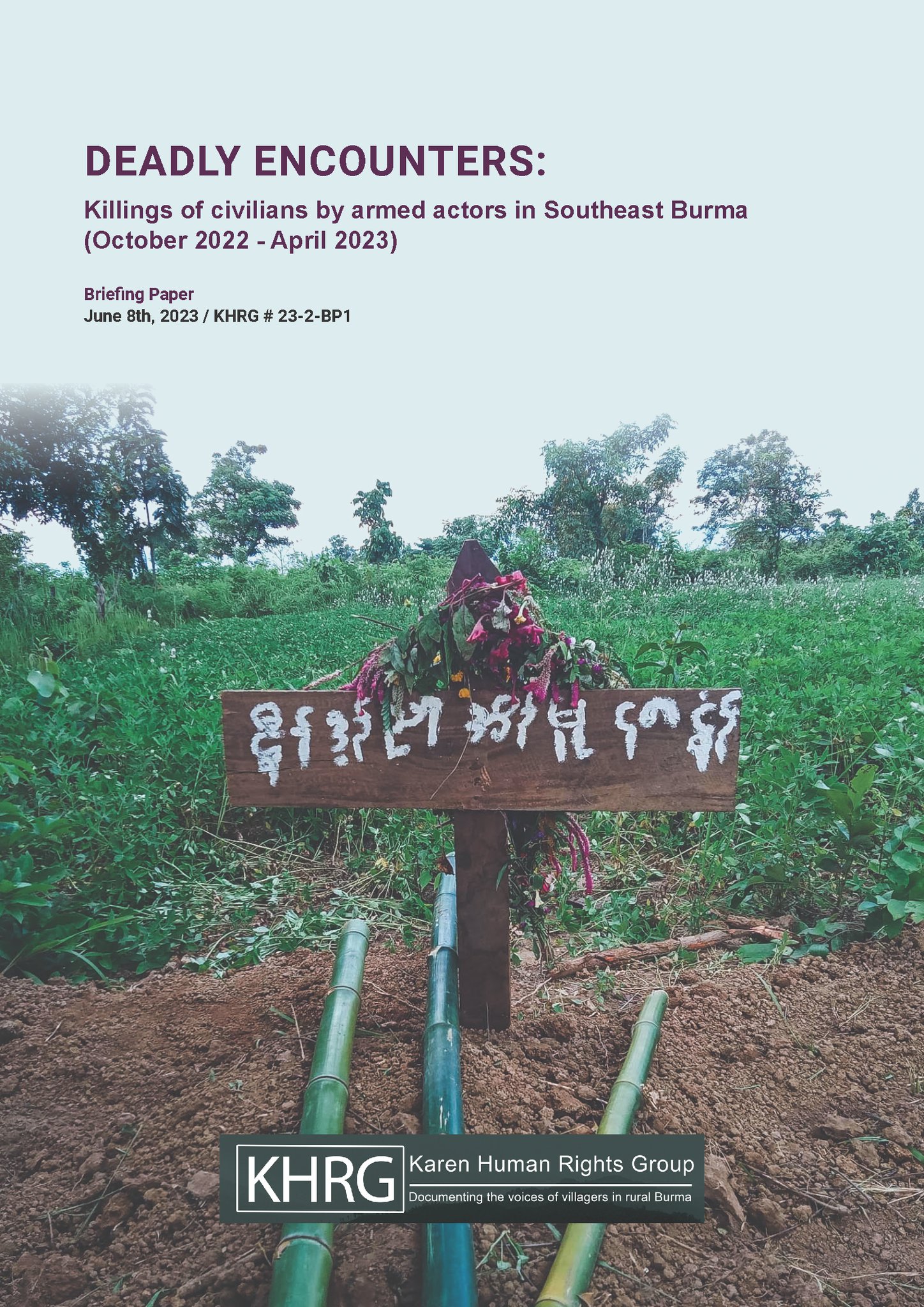Deadly Encounters: Killings of civilians by armed actors in Southeast Burma (October 2022 – April 2023)


1. Introduction
“If they shoot anyone they see [on sight] like this, all villagers will be gone.”
Testimony of Saw N—, a 51-year-old villager from O— village, Kaw Nweh village tract,
Kaw T’Ree Township, Dooplaya District.[1]
Since the 2021 coup[2], the human rights and security situation in locally-defined Karen State[3] has worsened, with reports of violations committed by the State Administration Council (SAC)[4] increasing in the region, including air strikes, indiscriminate shelling, burning of civilian properties, arbitrary arrests, torture and deprivation of humanitarian aid. Killing cases are also regularly reported to KHRG across all seven districts in its operation area, with at least 45 cases of killings reported between January 2022 and April 2023. Of these, 22 took place in the past few months, between October 2022 and April 2023. The actual number of killing incidents is likely much higher than this.
This briefing paper took as its subject of analysis 14 cases of killings of civilians by armed groups across Karen State, committed between October 2022 and April 2023, underlining their deep impact on the communities regarding villagers’ safety and livelihood. Of the cases analysed for this briefing paper, 11 incidents were perpetrated by the SAC and its allied forces, and three were committed by local resistance armed groups. This paper provides a contextual and historical overview of the unsafe situation in Southeast Burma. It then shows evidence and patterns of killing incidents faced by villagers, in particular when encountering soldiers while travelling. It concludes with a security and legal analysis of the situation in the region, and ends with a set of policy recommendations for stakeholders.
2. Contextual overview: Decades of abuses, renewed since 2021
The 2021 coup, staged by the State Administration Council (SAC), provoked a storm of pro-democracy protests throughout the country in opposition to the regime, known locally as the Spring Revolution, and escalated the civil war between the military and local ethnic armed organisations throughout Burma. Early peaceful pro-democracy protests and the Civil Disobedience Movement (CDM)[5] began in the cities, especially in Yangon, with the goal to restore the civilian government. The military responded violently to the peaceful protests: at least 3,520 civilians who joined the pro-democracy movement have been killed by the military junta since the coup, with the exact number likely to be much higher, according to Assistance Association of Political Prisoners (AAPP).[6] Many people supporting anti-coup efforts in Burma, especially CDM and National League for Democracy (NLD)[7] members, have fled to territories under the control of ethnic armed groups like Karen State,[8] after the Karen National Union (KNU)[9] released, in the early days after the coup, their position rejecting the military junta and providing help and protection for all civilians who sought safety.[10]
Human rights violations in Southeast Burma, however, did not start with the 2021 coup. They are closely linked with military policies adopted by the Burma Army as early as the 1960s, and with the impunity enjoyed by their military leaders for past violations. One of those policies, the “four cuts” strategy, aimed to target civilians and sever alleged ties between ethnic armed groups and local communities, by cutting off their access to food, funds, intelligence, and recruits. Shoot-on-sight policies were also adopted by the military in ethnic states. Such policies led to countless human rights violations over the past 70 years, causing widespread fear among the civilian population. In 1994, Naw P—, a 27-year-old female villager from Hpa-an District, told KHRG: “Now I’m still afraid. I never want to see SLORC[11] [Burma Army] soldiers again. If I hear of them, I’ll run away. If we don’t run, they shoot us, and if we run, they also shoot at us. The soldiers said: ‘Don’t run away’ but then they shot at us, so we must run to escape.”[12] In such an atmosphere of terror and hostility, where any contact with Burma Army soldiers was potentially fatal, civilians lived in constant fear for their lives. 30 years later, and in particular after the coup, soldiers continue to shoot at villagers following the same patterns as in the past, leading to a resurgence of killing cases.
View the original

